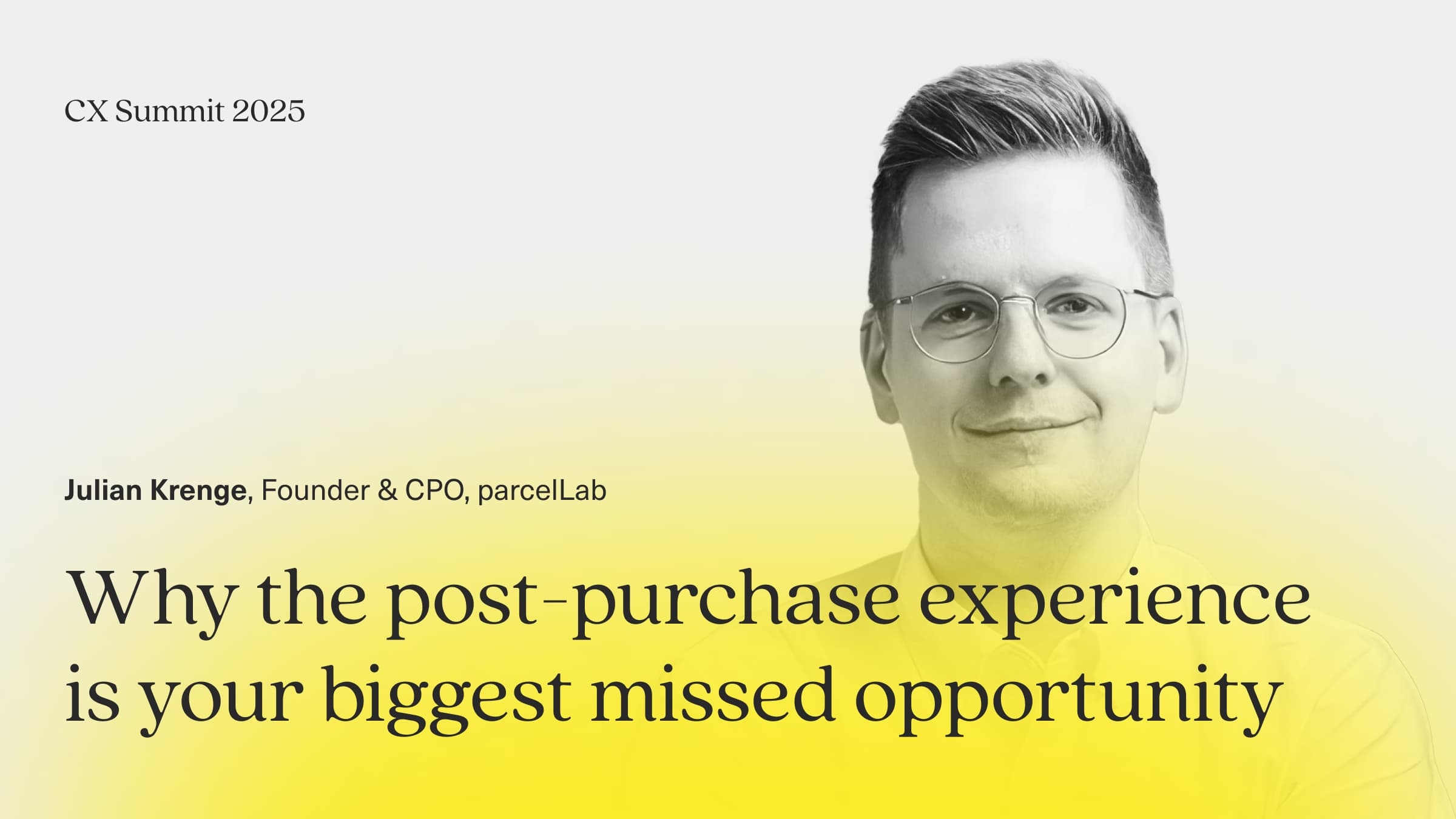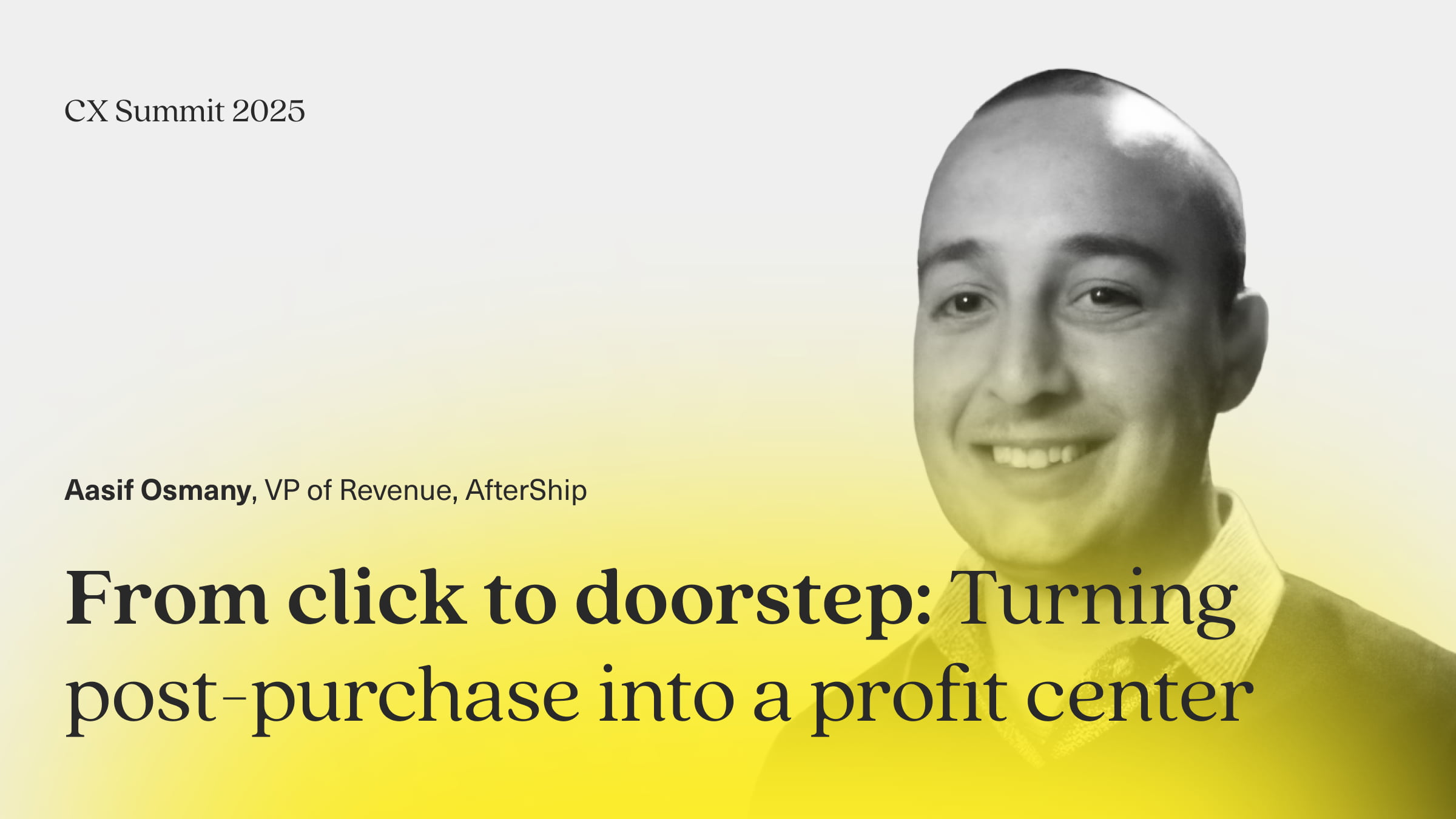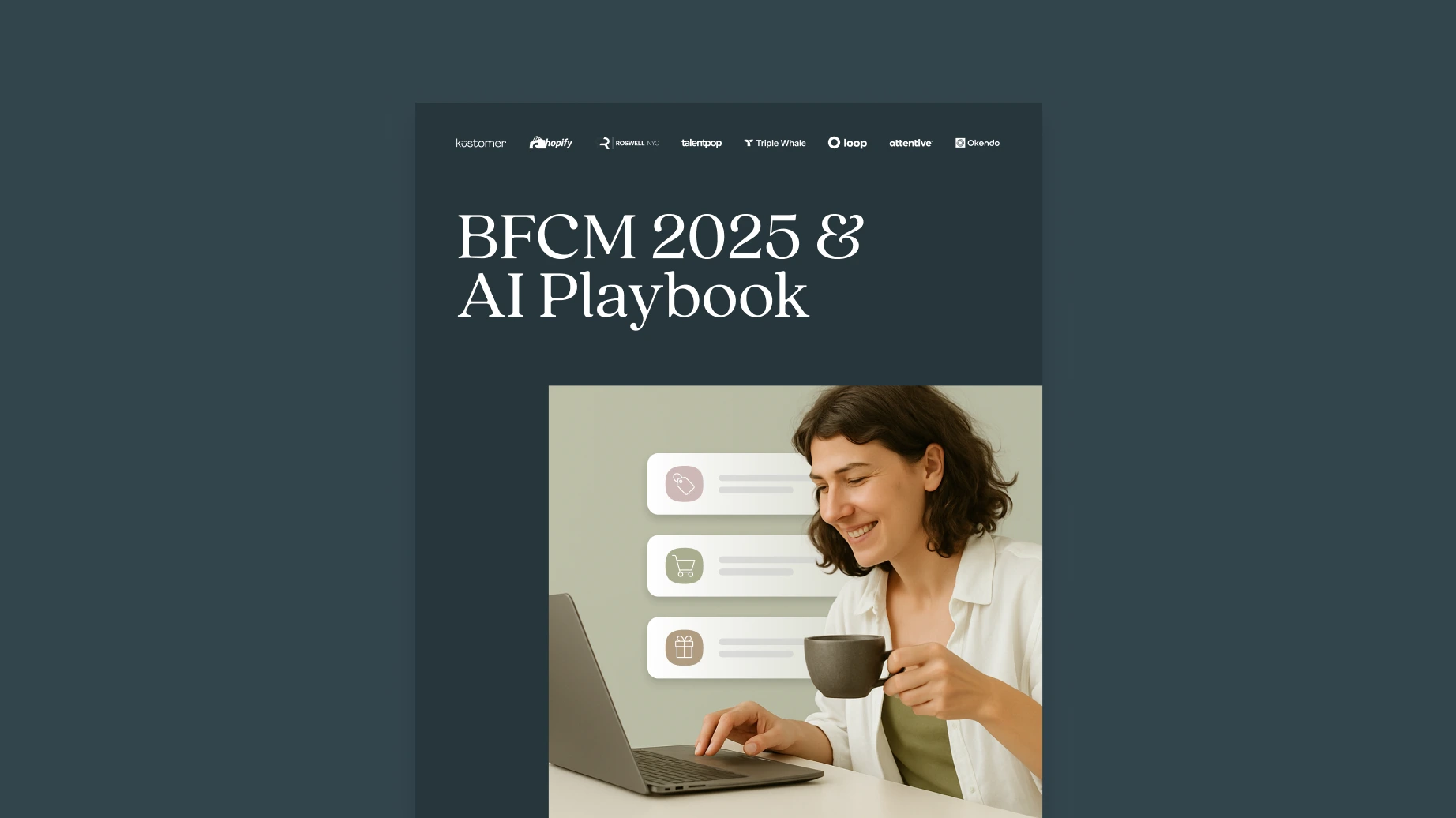Julian is the co-founder and Chief Product Officer at parcelLab, which was started about ten years ago, helping retailers primarily in the enterprise space with what we call post purchase experience - order tracking, proactive communications, and returns.
At the CX Summit, Julian chatted with Kustomer CMO Gabe Larsen to provide valuable insights for brands looking to elevate their game.
This interview has been edited for clarity.
Gabe: Let’s jump into it. Why do you think the post-purchase experience is often so overlooked?
Julian: That has definitely evolved. Ten years ago, “overlooked” meant it was not even on most people’s radar. Today, it is more about unclear ownership. Who actually owns post-purchase? Is it a customer service initiative to reduce “Where is my order?” inquiries? Is it marketing’s job to drive loyalty? Or logistics, who handles fulfillment and delivery speed?
Because responsibility is so fuzzy, the budget often gets directed elsewhere—to acquisition, SEO, or AI optimization—things that are more clearly defined. That ambiguity leads to post-purchase still being deprioritized.
Gabe: That makes sense. It is not that people are ignoring it—it is just vague. But there is definitely a cost to getting it wrong. What do you see as the cost of a poor post-purchase experience?
Julian: There are a few very obvious cost centers. First, WISMO—“Where is my order?”—and return-related inquiries can make up around 40% of all support tickets. These take time and are expensive to handle.
Second, when customers do not have a good experience, they often do not return. You spend all this money acquiring a customer—SEO, conversion optimization, ads—only to let that relationship fade away after the purchase. You need to reengage them.
We regularly see that up to 8% of customers will immediately reconvert if you communicate with them effectively post-purchase. Finally, it is about building trust and increasing repurchase velocity—especially when you are not Amazon and cannot offer nationwide two-day delivery. Trust becomes your differentiator.
Gabe: Right. Competing with Amazon’s two-day delivery is tough, but building trust can go a long way. Let’s get into the details. How do you and ParcelLab help brands reduce support volume and increase loyalty?
Julian: We focus on flexibility—giving brands the tools to deliver experiences that reflect their identity. No one wants a generic, out-of-the-box solution.
Take IKEA, for example. They are not optimizing for an immediate second purchase. If I buy a couch today, they are not pushing me to buy five pillows tomorrow. Their goal is to create a good experience so that next time I move or furnish a room, I will go back to IKEA because it was easy and convenient.
Another great example is Hexclad. Their kitchenware is priced fairly, but not cheap. So, they focus heavily on delivering great customer service and building long-term loyalty.
Contrast that with fast fashion retailers like H&M, where success depends on getting a customer to purchase two or three times just to break even. They prioritize quick reengagement and reconversion. It all depends on your strategy as a brand.
Gabe: That is a great point. It is about knowing your business model and aligning your post-purchase strategy accordingly. Do any standout examples come to mind that this audience might learn from?
Julian: One of my favorites is Adidas. They went all-in on loyalty as a strategic priority. Every post-purchase email includes your loyalty member status and a progress bar right in the header. It reinforces their core message at every touchpoint—even after the transaction. That is a brilliant example of using post-purchase to keep customers engaged with your brand mission.
Gabe:
That is a great insight—using post-purchase as another place to tell your brand story. Any others you want to share?
Julian: Definitely. Let me give you two quick ones.
First, Bose. When you order something like $500 headphones, a key part of the experience is setup. Rather than waiting until the customer opens the box and gets confused, Bose proactively sends instructions during shipping—things like “Download this app,” or “Here’s how setup works.” It makes the unboxing experience smoother.
Second, Farfetch. They serve high-value customers with average order values well into the hundreds. They segment post-purchase flows aggressively. First-time buyers get a different experience than repeat customers. VIPs get white-glove treatment—if there is a customs issue or delay, it gets escalated. This type of segmentation is a smart, scalable way to ensure everyone has the experience they expect.
Gabe: Fantastic examples. I think people really appreciate the tactical ideas, especially in a space that can feel overwhelming. Any final takeaways you want to leave with the audience?
Julian: Here is one thing anyone can do today—no new tools or budget required. Go look at your current order confirmation and dispatch emails. Try to view them through the eyes of a first-time customer. Ask yourself: what are the top three questions a new customer might have? Then, add a branded section at the bottom of the email that answers them clearly. Just doing this can reduce WISMO by 5%—and it is such a simple, low-effort change.
Closing thoughts
Julian Krenge of ParcelLab reminds us that post-purchase is not an afterthought—it is a strategic opportunity to build loyalty, reduce costs, and differentiate your brand. Whether you are delivering a luxury experience or optimizing for repeat purchases, the key is intentionality. Here are three takeaways:
- Use proactive messaging to reduce support volume and build trust early!
- Define clear ownership for post-purchase across your teams
- Tailor communication to match customer intent and brand goals




